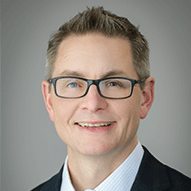Dallas
214-456-2768
Fax: 214-456-6898
Plano
469-303-0055
Fax: 469-303-0655
Deep brain stimulation (DBS) is a treatment for different types of movement disorders including dystonia, myoclonus, tremors, and chorea. Children with movement disorders experience movements they can’t control, which limits their ability to walk, speak, or use their hands.
The care team at Children’s Health has the expertise and experience to offer your child the most advanced treatments for challenging movement disorders. We work with and support your child through the entire DBS process.
214-456-2768
Fax: 214-456-6898
469-303-0055
Fax: 469-303-0655
Deep brain stimulation (DBS) involves implanting electrodes in the brain and using electrical impulses to help control abnormal movements. DBS offers another option for children whose movement disorders can’t be controlled with medications.
In DBS, surgeons implant electrodes in the parts of a child’s brain that control movement. They also insert a pulse generator near the collarbone. The pulse generator sends electrical signals to the electrodes, which reduces the brain activity that causes unwanted movements. A doctor will program the pulse generator using a handheld device. Over the year or two following surgery, your doctor will work closely with your child to adjust the amount of electrical stimulation. This ensures that your child is getting the amount they need when they need it.
While DBS doesn’t cure a movement disorder, it can reduce symptoms in most children. Each child has different needs and responses. You can talk with your doctor about what to expect and what advantages DBS might bring your child.
Doctors can create different settings so that a child or parent can control the stimulation for different activities, such as eating or walking. If the child’s needs evolve over time, the settings can be changed. The device can also be turned off. Two features of DBS that many parents appreciate are the fact that it can be modified to match a person’s needs, and it is reversible.
If the settings are too high, a child may experience discomfort or pain. Your doctor will adjust the DBS settings every month or so, which gives your child’s brain time to adjust to the stimulation. It can take some time 6-24 months for the doctor to find the best settings for your child.
Any operation on the brain can involve some risks. These include bleeding in the brain (hemorrhage) and stroke. The risk of these is very, very low in children, but not zero. There is the possibility of an infection. Most of that risk is during the first few weeks after surgery. There is also the chance that DBS will not be effective. But these problems all are very rare.
The surgery consists of two steps.
A month later, and then monthly for much of a year, the doctor will meet with your child to adjust the settings and find the ones that are most effective.
Your child will have neuropsychological testing so that we can better understand their brain function. Your child also will need imaging studies of their brain so that the doctors can plan the surgery.
The first operation usually takes four to six hours. Your child will have general anesthesia (deep sedation). They will probably spend two nights in the hospital.
The second surgery is faster (2-3 hours) with lighter sedation, and your child can go home that night.
Your child should expect to make gradual changes. We typically start seeing small changes in a child's movement within a week or two after each monthly visit with the neurologist. Over time, as the settings are adjusted, your child should start to have more control over their movements.
At first, your child will need the medications and therapies they were using before DBS. Over time, they may be able to reduce the medications, but that will not happen immediately. If the pulse generator has a rechargeable battery, your child will need to recharge it several times a week. The pulse generator will need to be replaced in five to seven years in an outpatient procedure.
Your child will have to fast overnight before the surgery.
You will receive specific instructions from the surgery team.
Our Child Life staff can help your child set realistic expectations and provide with age-appropriate emotional support on the surgery day. We also can work with siblings to address their concerns, and we can help the whole family prepare for DBS.


The improvement depends on a child’s symptoms and on how long they have had the disorder. Children who have DBS sooner after their movement disorder starts generally have better effects from DBS.
DBS comes in two types: rechargeable and non-rechargeable. The rechargeable batteries last longer, which lets you go a longer time between replacement surgeries. However, with a rechargeable pulse generator a child has to sit and charge the battery for one or two hours two or three times a week. With a unit that is not rechargeable, they will have to have follow-up surgery to replace it in about five rather than seven years.